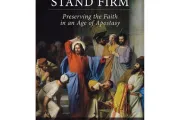Next, the author explores how most bishops and religious orders dealt with perpetrators of abuse. Oftentimes, an abuser would be sent to a psychological treatment center for priests and religious. The abuser would go through the treatment program and would be allowed to return to his diocese where the bishop would assign him to another parish. The bishops were told by the therapists that the abuser was safe to be allowed to minister again. Unfortunately, many times the abuser would abuse again and the process would start over.
Most of the time, the bishops relied too heavily on therapists to allow abusers to return to ministry. Cafardi discusses what was happening with therapy centers and how they allowed patients to minister outside the center at nearby parishes where some continued abusing children.
In the sixth and final chapter Cafardi reviews what the American bishops had learned from the events before 2002. They learned that they need to act quickly and publicly when an accusation is presented to them. They have learned not to sweep things under the carpet, but to deal with the situation. They have also learned to offer and provide pastoral and other legitimate aid to victims. They also have learned to have a policy and procedural plan for sexual misconduct committed by anyone working with their dioceses. This was a costly and very disturbing lesson for them to learn.
Nicholas Cafardi has presented a thorough historical synopsis of the child abuse response of the American bishops. He has examined the issue from a canonical, civil law, and historical points of view. This book is highly recommended to those interested in the history of the Catholic Church sexual abuse scandal and what was or was not done by the bishops.
Nicholas P. Cafardi is dean emeritus of the Duquesne University School of Law. He received his undergraduate degree from the Gregorian University in Rome, his master’s degree in philosophy from Duquesne University, his law degree from the University of Pittsburgh and his licentiate in canon law from the University of St. Thomas in Rome. He was an original member of the United States Conference of Catholic Bishops National Review Board for the Protection of Children and Youth (otherwise known as the National Review Board) and was its second chairman till June 2005. He is the author of Tax Exempt Organizations (2008), Understanding Nonprofit and Tax Exempt Organizations (2006), Legal Process and Procedure (2002), and coauthored with Cardinal Adam Maida, Church Property, Church Finances, and Church-Related Corporations (1983).


